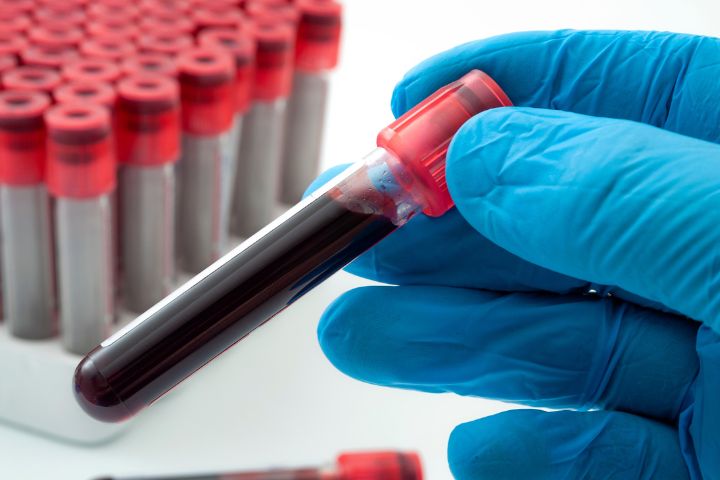The Basic Principles Of Northeast Medical Institute - New Haven Campus Phlebotomy Course & Cna Class
The Basic Principles Of Northeast Medical Institute - New Haven Campus Phlebotomy Course & Cna Class
Blog Article
Fascination About Northeast Medical Institute - New Haven Campus Phlebotomy Course & Cna Class
Table of ContentsNortheast Medical Institute - New Haven Campus Phlebotomy Course & Cna Class Things To Know Before You Get ThisFascination About Northeast Medical Institute - New Haven Campus Phlebotomy Course & Cna ClassNortheast Medical Institute - New Haven Campus Phlebotomy Course & Cna Class for BeginnersAbout Northeast Medical Institute - New Haven Campus Phlebotomy Course & Cna ClassThe Ultimate Guide To Northeast Medical Institute - New Haven Campus Phlebotomy Course & Cna ClassThe Buzz on Northeast Medical Institute - New Haven Campus Phlebotomy Course & Cna Class
The usage of such gadgets ought to be gone along with by other infection avoidance and control methods, and training in their use.For settings with low resources, price is a driving aspect in procurement of safety-engineered gadgets. Where safety-engineered gadgets are not available, experienced usage of a needle and syringe is appropriate.
One of the necessary markers of top quality of care in phlebotomy is the involvement and participation of the person; this is equally advantageous to both the health worker and the patient. Clear info either created or spoken ought to be offered to every individual who undertakes phlebotomy. Annex F provides sample message for discussing the blood-sampling treatment to a patient. labelling); transportation conditions; analysis of outcomes for medical monitoring. In an outpatient division or facility, give a devoted phlebotomy workstation containing: a clean surface area with 2 chairs (one for the phlebotomist and the other for the client); a hand wash basin with soap, running water and paper towels; alcohol hand rub. In the blood-sampling space for an outpatient department or clinic, give a comfy reclining couch with an arm remainder.
The Single Strategy To Use For Northeast Medical Institute - New Haven Campus Phlebotomy Course & Cna Class
Ensure that the indications for blood tasting are clearly defined, either in a composed procedure or in documented instructions (e.g. in a lab form). In any way times, comply with the approaches for infection avoidance and control noted in Table 2.2. Infection avoidance and control methods. Accumulate all the devices needed for the procedure and area it within safe and very easy reach on a tray or cart, making certain that all the things are clearly noticeable.
Introduce yourself to the person, and ask the person to state their full name. Check that the lab form matches the patient's identity (i.e. match the individual's details with the research laboratory type, to guarantee precise identification).
Make the individual comfortable in a supine position (ideally). Area a clean paper or towel under the patient's arm. Talk about the test to be done (see Annex F) and obtain spoken authorization. The client has a right to reject an examination at any kind of time before the blood tasting, so it is essential to make certain that the client has recognized the treatment.
Northeast Medical Institute - New Haven Campus Phlebotomy Course & Cna Class - The Facts
Extend the person's arm and examine the antecubital fossa or forearm. Situate a vein of a good dimension that is visible, straight and clear. The layout in Area 2.3, reveals typical placements of the vessels, yet several variants are feasible. The median cubital vein exists in between muscles and is usually one of the most simple to penetrate.
DO NOT insert the needle where blood vessels are drawing away, since this enhances the possibility of a haematoma. Locating the vein will certainly aid in identifying the appropriate dimension of needle.
Haemolysis, contamination and visibility of intravenous fluid and medicine can all modify the results (39. Nursing personnel and doctors might access central venous lines for samplings complying with protocols. Specimens from main lines carry a risk of contamination or wrong lab test outcomes. It serves, however not suitable, to injure samplings when initial presenting an in-dwelling venous tool, before linking the cannula to the intravenous fluids.
Northeast Medical Institute - New Haven Campus Phlebotomy Course & Cna Class - An Overview
Failure to allow adequate get in touch with time enhances the danger of contamination. DO NOT touch the cleaned site; in particular, DO NOT place a finger over the vein to guide the shaft of the exposed needle.
Ask the client to form a fist so the capillaries are a lot more noticeable. Enter the vein quickly at a 30 level angle or much less, and proceed to introduce the needle along the vein at the easiest angle of entry - PCT Training. When adequate blood has been collected, launch the tourniquet BEFORE taking out the needle
A Biased View of Northeast Medical Institute - New Haven Campus Phlebotomy Course & Cna Class
Take out the needle delicately and apply gentle stress to the website with a tidy gauze or completely dry cotton-wool round. Ask the individual to hold the gauze More Info or cotton woollen in place, with the arm extended and raised. Ask the person NOT to bend the arm, since doing so causes a haematoma.

Some Ideas on Northeast Medical Institute - New Haven Campus Phlebotomy Course & Cna Class You Need To Know
Where feasible, keep the tubes in a shelf and move the rack towards you - https://northeastmed.carrd.co. If the sample tube does not have a rubber stopper, infuse incredibly slowly into the tube as lessening the pressure and rate utilized to move the specimen minimizes the risk of haemolysis.

Report this page